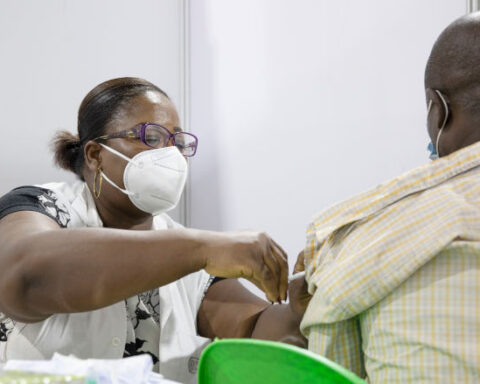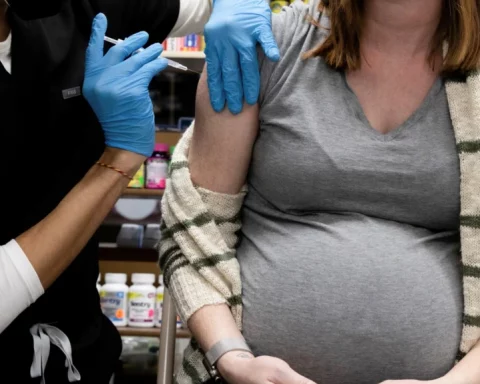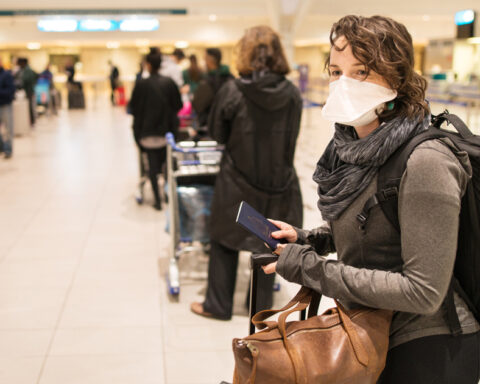Introduction
A year into the pandemic of the deadly and highly infectious coronavirus disease, COVID-19, the global effort to develop and distribute an effective vaccine has already produced several promising options. The accelerated development of multiple vaccine candidates is unprecedented; the process typically takes eight to fifteen years.
Now, many countries face the massive challenge of producing enough vaccines to immunize all their citizens. At the same time, public hesitation about the new vaccines could slow efforts to end a health crisis that has killed more than one million people.
What is the status of a COVID-19 vaccine?
Among tens of vaccine candidates that are undergoing large-scale clinical trials, several have already been approved for emergency use in countries including China, Russia, the United Kingdom, and the United States.
Note: Vaccine candidates repurposed from existing vaccines for other diseases are not included. There are a dozen such candidates in clinical trials.Sources : New York Times; Policy Cures Research; U.S. National Institutes of Health.
Read a complete list of vaccine candidates undergoing clinical trials in the appendix.
Nearly half of the vaccines that have made it to clinical trials are being developed by firms and research groups in China and the United States. The first human trial in the United States began in Seattle in March with a vaccine by Moderna Inc. That vaccine was approved for emergency use in the United States after it appeared highly effective in large-scale trials. A vaccine by U.S. pharmaceutical giant Pfizer and partnering German firm BioNTech was authorized for distribution in several countries beginning in early December after similarly promising results. In China, Beijing has approved several of its vaccine candidates for limited use. Russia approved two vaccines before testing them in large trials, moves that drew censure from scientists around the globe.
Additionally, several candidates each are being developed in Australia, Germany, and the United Kingdom. The UK’s University of Oxford and British-Swedish company AstraZeneca are working on a vaccine that is undergoing large-scale trials in Brazil, India, South Africa, the UK, and the United States. In December, AstraZeneca announced it will collaborate with the developers of one of the Russian vaccines with the aim of combining their two candidates for overall better protection.
Who is involved?
Vaccines are frequently collaborative efforts across sectors of society, with private pharmaceutical firms teaming up with public health agencies or university labs. Here are snapshots of some of the major players in the COVID-19 vaccine field.
Governments. Public health agencies play critical roles in vaccine research, supplying funds to develop a COVID-19 vaccine. In the United States, President Donald J. Trump’s administration launched Operation Warp Speed, a project aimed at developing an effective vaccine and manufacturing enough doses for all three hundred million Americans by early 2021. The effort, which has pledged billions of dollars to companies with promising vaccine candidates, brings together agencies within the Department of Health and Human Services (HHS)—including the Centers for Disease Control and Prevention (CDC), the National Institutes of Health (NIH), and the Food and Drug Administration (FDA)—and the Department of Defense. The European Commission is also funding several candidates; and in a virtual summit hosted by the European Union, world leaders, organizations, and banks pledged $8 billion for vaccine research. In China, the government is closely overseeing efforts on its territory, with state-owned firms making up about two-fifths of the country’s vaccine industry.
International institutions. The WHO and other multilateral institutions such as the World Bank are focused on financing and manufacturing a COVID-19 vaccine for global use, in particular to ensure fair allocation among all countries. Also at the forefront of multilateral efforts is the Coalition for Epidemic Preparedness Innovations (CEPI), a global alliance that was founded by Norway, India, the Bill & Melinda Gates Foundation, the UK-based Wellcome Trust, and the World Economic Forum. Gavi, the Vaccine Alliance—also founded by the Gates Foundation—is a public-private partnership focused on improving vaccine access for lower-income countries. In June, the WHO, CEPI, and Gavi launched COVAX, a global initiative seeking more than $18 billion in funding to procure two billion doses of a vaccine by the end of 2021. By October, more than 180 countries had joined COVAX, with Russia and the United States absent.
Private sector. The pharmaceutical industry is driving much of the push. Companies ranging from biotech start-ups to giants such as Johnson & Johnson and China-based Sinopharm shifted their research and development (R&D) efforts to focus on COVID-19. While early research into a vaccine candidate typically receives government funding, such as NIH grants in the case of the United States, the bulk of financing for clinical development generally comes from private sources.
Research institutions and nonprofits. Many of the COVID-19 vaccine candidates involve a university or college assisting in preclinical research or clinical trials. In the case of the University of Oxford’s candidate, the research team was already working on vaccines for an unknown disease that could cause a pandemic; then, in January, the group zeroed in on COVID-19. The Gates Foundation has been the leading nonprofit funding COVID-19 vaccine efforts.
How does a vaccine work?
Traditionally, vaccines are dead or weakened virus molecules—known as antigens—that trigger defensive white blood cells in the immune system to create antibodies that bind to the virus and neutralize it.
There are four main types of conventional vaccines:
- live vaccines use a weakened form of the virus to prompt the creation of antibodies;
- inactivated vaccines use a dead version of the virus;
- toxoid vaccines use toxins made by the virus to produce immunity to the part of the virus that causes disease; and
- subunit, recombinant, polysaccharide, and conjugate vaccines use proteins or other pieces of the virus.
There are also several new types of vaccines that use the virus’s genetic material—DNA or RNA—to prompt the body to create antibodies. More than a dozen of the COVID-19 vaccine candidates in clinical trials are genetic-based, including those by Pfizer and BioNTech and by Moderna. No vaccine of this kind had ever been approved for commercial use in humans before the COVID-19 pandemic.
When most of a population has been vaccinated and is immune to a particular disease, even those who are not immune are considered protected because the likelihood of an outbreak is small. This is known as herd immunity. Chickenpox, measles, mumps, and polio are all examples of diseases for which the United States has achieved herd immunity due to vaccines. Scientists are divided about how much of a population must have COVID-19 antibodies to prevent new outbreaks, with estimates ranging from less than half to over 80 percent.
How is a vaccine developed?
There are many stages involved in the development and production of a vaccine, from initial academic research to distribution to hospitals and doctor’s offices.

Clinical trials are crucial indicators of whether a vaccine is effective. Potential vaccines, as with other drugs, are commonly tested in animals first. Human trials are broken up into three phases, progressively increasing the number of volunteers. If a vaccine candidate appears to be ineffective, has harmful side effects, or is too similar to existing vaccines, it won’t move on. Trials are often carried out “blind,” by which some groups are administered the vaccine and some receive a placebo.
If a vaccine candidate is considered successful in human trials, the developers can seek approval by a national or regional regulatory agency, such as the FDA or the European Medicines Agency. In the United States, less than 10 percent of all drugs that go into clinical trials make it past this part of the process. Prior to approval, a vaccine maker can ask the FDA for an emergency use authorization (EUA), which allows the sale of unapproved medical products. Pfizer and BioNTech were granted an EUA for their vaccine in the United States on December 11, and Moderna was granted one a week later.
Additionally, while the WHO does not approve drugs, the vaccine maker can request prequalification by the WHO—a process to determine quality assurance. Many low- and middle-income countries rely on WHO prequalification [PDF] when buying medicines. Finally, the vaccine must be approved by national regulators in other countries to be distributed abroad.
Following approval, the vaccine can be manufactured for broad use. However, with the need for billions of doses of a COVID-19 vaccine, experts warn that many more production plants are needed to fulfill the global demand. COVAX estimated it will require $5.3 billion to scale up vaccine manufacturing, including by building specialized production plants. The U.S. Biomedical Advanced Research and Development Authority (BARDA), part of HHS, has helped to scale up manufacturing in the United States.
Can vaccine development be sped up?
Under normal circumstances, during which the stages of vaccine development occur sequentially, a vaccine on average takes eight to fifteen years to get from the lab into the hands of health-care providers. The fastest a vaccine had ever been developed before this pandemic is four years. Since the emergence of COVID-19, however, researchers around the globe have accelerated the process by carrying out stages of development simultaneously and by looking to new vaccine technologies. “I think what we’re seeing is remarkable,” says Paul Offit, director of the Vaccine Education Center at the Children’s Hospital of Philadelphia. “It is a scientific tour de force.”
The accelerated Operation Warp Speed timeline has hinged on overlapping stages of development; mass production started for strong candidates even while clinical trials were ongoing. Moderna has received $2.5 billion in a deal under Warp Speed that included the purchase of one hundred million doses. Pfizer and BioNTech signed a $1.95 billion contract to manufacture and distribute one hundred million doses of their vaccine by the end of 2020 at no cost to Americans. (Pfizer executives said they have not accepted any U.S. federal funding for the development of their vaccine.)
Clinical trials are difficult to speed up because antibodies take time to develop in the body. So-called challenge trials, in which patients are purposefully exposed to a disease, are another way to cut time out of the process, but they are ethically controversial. Typically, challenge trials are only done with curable diseases, such as typhoid fever, and there is no known cure for COVID-19 yet.
Another way researchers have quickened the process is by focusing on new vaccine approaches. RNA- and DNA-based vaccines can be developed far faster than conventional vaccines, which require months at a time of growing antigens in animal or insect cells.
How can COVID-19 treatments help?
Dozens of treatments—which would not prevent someone from being infected with COVID-19 but could help reduce the severity and duration of illness—are being developed or repurposed. Among them is the antiviral drug remdesivir, which was developed by U.S.-based Gilead Sciences and already approved by the FDA. An NIAID trial of remdesivir that involved dozens of sites in the United States, Europe, and Asia showed faster rates of recovery from the virus. Some health experts are also optimistic about the use of dexamethasone, a common steroid, which was found to reduce the risk of death in severely ill COVID-19 patients in the UK. In August, the FDA authorized emergency use of convalescent plasma, or blood plasma of previously infected people who have created COVID-19 antibodies. Though plasma donations have already been used in tens of thousands of patients, there have not been robust studies to determine the treatment’s effectiveness.
Can vaccines end the coronavirus pandemic?
Even with several vaccines approved for emergency use, there remains the tremendous challenge of producing enough of them for the world’s population. An estimated one billion doses will need to be manufactured just to vaccinate workers in health care and other essential industries globally, and that is if only a single dose is required for each person. (Both the Pfizer-BioNTech and Moderna vaccines require two doses.)
This task has both motivated countries to scale up production, as well as pitted them against one another amid fears of a limited vaccine supply. Wealthy countries including Australia, Canada, and the United States have struck deals with manufacturers to provide their countries with more than enough doses for their populations, leaving lower-income countries unable to immunize but a small proportion of their populations in the coming months. Brazil, China, and India all have large vaccine industries, which will allow them to reserve some of their vaccine supplies for their own citizens. Experts including CFR’s Thomas J. Bollyky have warned that bidding wars over vaccines will lead to inequitable distribution and, ultimately, fail to eliminate the risk of new outbreaks. In a sign of cooperation, Group of Twenty (G20) countries pledged at a November summit to ensure affordable vaccine access globally, though they did not specify new funding commitments.
On top of these challenges are the public’s concerns about a sped-up vaccine. In a November poll by the Pew Research Center, roughly 40 percent of Americans surveyed said they would not get a coronavirus vaccine if it were available to them now. Moreover, scientists are still investigating how this new coronavirus behaves and trying to answer the many questions people have about the risk it poses and how much protection a vaccine will provide. This includes how effective vaccines will be against a mutating coronavirus, though researchers point out that mutations do not necessarily mean different strains of the virus or changes in its infectiousness or lethality. Uncovering such details about the virus, they say, will only help in the global effort to combat it.
Note: Vaccine candidates repurposed from existing vaccines for other diseases are not included. There are a dozen such candidates in clinical trials.Sources : New York Times; Policy Cures Research; U.S. National Institutes of Health.






